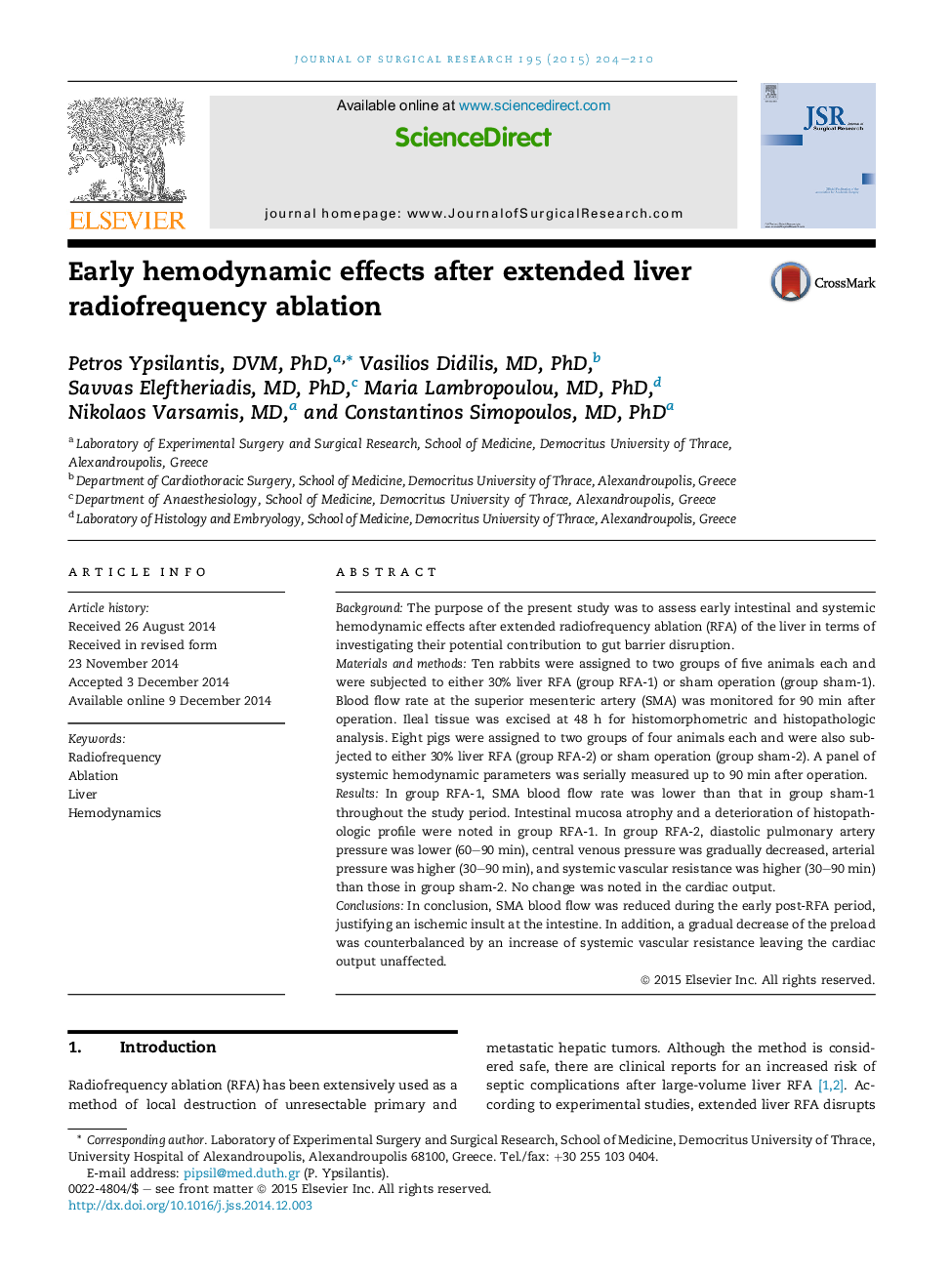| Article ID | Journal | Published Year | Pages | File Type |
|---|---|---|---|---|
| 4299890 | Journal of Surgical Research | 2015 | 7 Pages |
BackgroundThe purpose of the present study was to assess early intestinal and systemic hemodynamic effects after extended radiofrequency ablation (RFA) of the liver in terms of investigating their potential contribution to gut barrier disruption.Materials and methodsTen rabbits were assigned to two groups of five animals each and were subjected to either 30% liver RFA (group RFA-1) or sham operation (group sham-1). Blood flow rate at the superior mesenteric artery (SMA) was monitored for 90 min after operation. Ileal tissue was excised at 48 h for histomorphometric and histopathologic analysis. Eight pigs were assigned to two groups of four animals each and were also subjected to either 30% liver RFA (group RFA-2) or sham operation (group sham-2). A panel of systemic hemodynamic parameters was serially measured up to 90 min after operation.ResultsIn group RFA-1, SMA blood flow rate was lower than that in group sham-1 throughout the study period. Intestinal mucosa atrophy and a deterioration of histopathologic profile were noted in group RFA-1. In group RFA-2, diastolic pulmonary artery pressure was lower (60–90 min), central venous pressure was gradually decreased, arterial pressure was higher (30–90 min), and systemic vascular resistance was higher (30–90 min) than those in group sham-2. No change was noted in the cardiac output.ConclusionsIn conclusion, SMA blood flow was reduced during the early post-RFA period, justifying an ischemic insult at the intestine. In addition, a gradual decrease of the preload was counterbalanced by an increase of systemic vascular resistance leaving the cardiac output unaffected.
